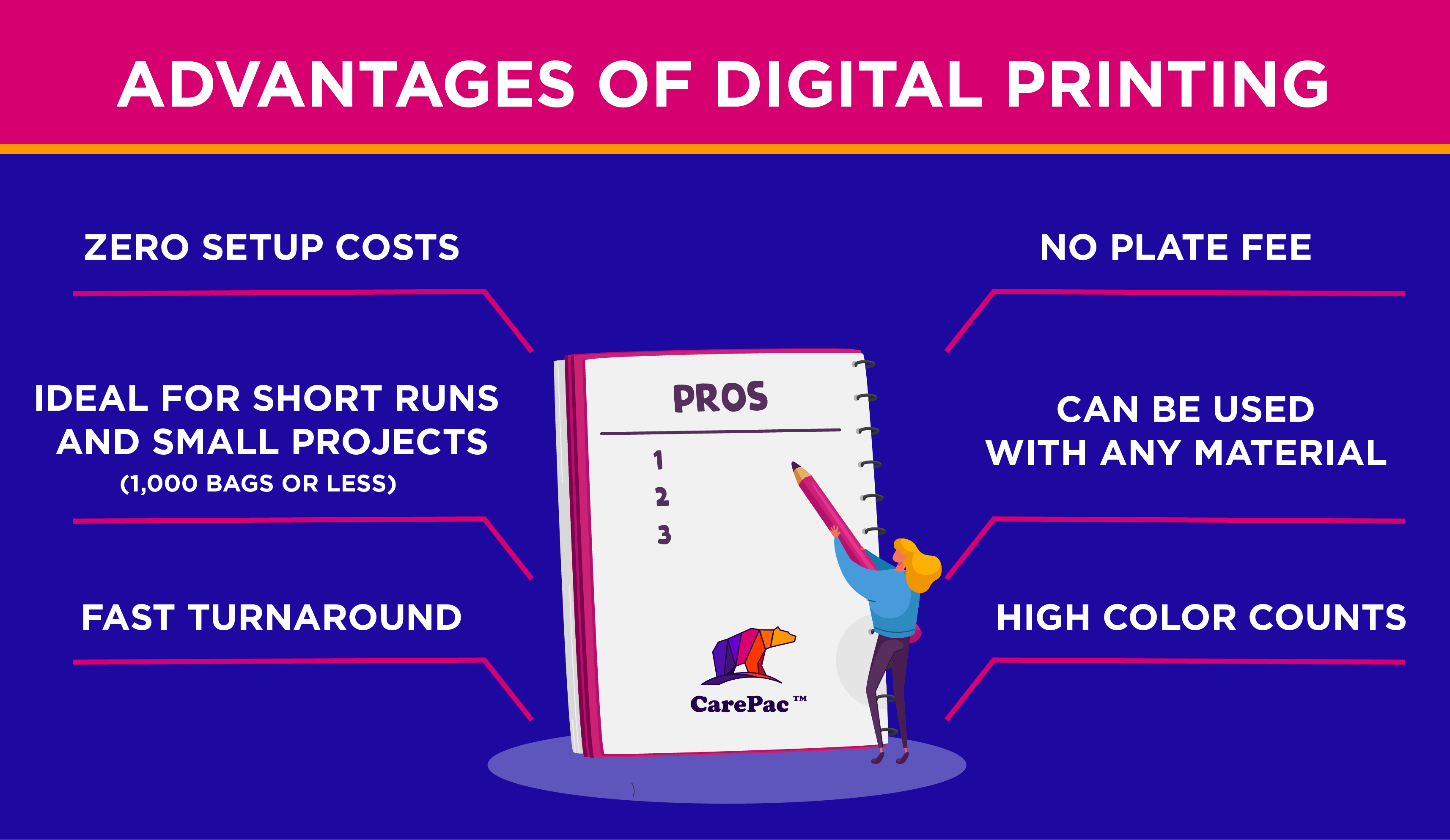What Does Digital Printing Do?
What Does Digital Printing Do?
Blog Article
Digital Printing Can Be Fun For Anyone
Table of ContentsThe smart Trick of Digital Printing That Nobody is Talking AboutThe Digital Printing DiariesHow Digital Printing can Save You Time, Stress, and Money.Digital Printing Can Be Fun For AnyoneDigital Printing for DummiesNot known Incorrect Statements About Digital Printing
Variable data printing, such as straight mail with individualized codes and addresses, is preferably fit for electronic printing. Digital fast printing just requires four actions of style, evaluation, printing and binding to obtain every little thing done. Digital quick printing has an exceptional advantage: print on demand.According to PMMI, digital printing allows brand names and producers to react quickly to customer needs while boosting the supply chain, reducing warehousing cost and waste, and delighting in faster time to market. That all noises excellent, yet just how does this modern technology do all that? The major differentiator of these innovations is that there are no set-up fees and no plates with digital printing.
The Only Guide for Digital Printing
According to Wikipedia, the biggest difference between digital printing and conventional methods such as lithography, flexography, gravure, or letterpress - Digital Printing is that there is no need to change printing plates in electronic printing, whereas in these analog printing approaches the plates are repetitively changed. This leads to quicker turnaround time and lowers cost when making use of digital printing.
Speedy manufacturing implies getting your product to market faster. It also indicates it's easier and faster to make adjustments later, when you change a recipe, include a SKU, or develop seasonal packaging. Digital printing is very adaptable, so it's easy to make changes to the plan design promptly. All of it returns to the plates.
Much more stock can mean more waste later on. With standard printing approaches, short-run printing is just not possible. Since a wonderful style can make or damage your item, digital printing constantly produces high-grade, clear and vibrant graphics each time. Digital printing on flexible pouches adds the intense, vivid, and accurate graphics that almost bid customers to get to out and touch them.
Digital printing is the process of printing digital-based images directly onto a range of media substratums. There is no need for a printing plate, unlike with offset printing. Digital data such as PDFs or desktop posting documents can be sent straight to the electronic printing press to print on paper, photo paper, canvas, material, synthetics, cardstock and various other substratums.
The Basic Principles Of Digital Printing
According to PMMI, electronic printing enables brand names and producers to react promptly to client needs while enhancing the supply chain, minimizing warehousing cost and waste, and appreciating faster time to market. That all audios terrific, however exactly how does this technology do all that? The major differentiator of these modern technologies is that there are no set-up fees and no plates with digital printing.
According to Wikipedia, the best difference between electronic printing and traditional methods such as lithography, flexography, gravure, or Get More Information letterpress is that there is no requirement to replace printing plates in electronic printing, whereas in these analog printing techniques the plates are repeatedly replaced. This results in quicker turn-around time and lowers price when using electronic printing.

See This Report about Digital Printing
More supply can imply even more waste later on. With traditional printing methods, short-run printing is just not possible. Due to the fact that a wonderful style can make or damage your product, digital printing constantly creates top notch, clear and vivid graphics each time. Digital printing on flexible bags adds the intense, lively, and exact graphics that practically beckon consumers to connect and touch them.

According to PMMI, digital printing allows brand names and makers to respond quickly to client needs while improving the supply chain, minimizing warehousing cost and waste, and taking pleasure in faster time to market. That all noises fantastic, however exactly how does this technology do all that? The major differentiator of these technologies is that there are no set-up charges and no plates with digital printing.
The smart Trick of Digital Printing That Nobody is Discussing
According to Wikipedia, the best difference between electronic printing and typical techniques such as lithography, flexography, gravure, or letterpress is that there is no demand to replace printing plates in electronic printing, whereas in these analog printing approaches home plates are consistently changed. This leads to quicker turnaround time and decreases expense when making use of digital printing.
Quick production suggests obtaining your product to market much faster. It also suggests it's simpler and faster to make modifications later on, when you transform a recipe, include a SKU, or develop seasonal packaging. Digital printing is highly adaptable, so it's simple to make changes to the plan layout rapidly. It all returns to home plates.

The smart Trick of Digital Printing That Nobody is Talking About
Digital printing is the process find out this here of printing digital-based pictures directly onto a range of media substrates. There is no requirement for a printing plate, unlike with countered printing. Digital files such as PDFs or desktop computer publishing data can be sent directly to the digital printing press to publish theoretically, image paper, canvas, fabric, synthetics, cardstock and other substrates.
Report this page